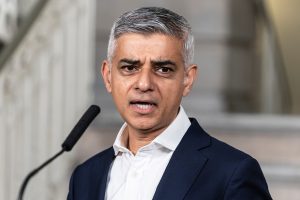Our political expert looks back over the last 12 months and ahead to 2024
As 2023 draws to a close, I’ve been casting my mind back over the past year to reflect on whether it’s been a good or a bad one for the coach and bus industry. To my mind, it’s been pretty indifferent.
The simple fact is that the bus industry remains badly underfunded, at least relative to the aspirations that the government set the sector back in the now largely irrelevant National Bus Strategy.
But it could have been a lot worse if the government hadn’t put in the extra funding it has.
Not that I am especially applauding the government for its generosity – the reality is that it had no choice from a public policy, economic and social point of view. The issue is whether it should have done more.
Funding worries
The question now is where the industry goes from here. With public spending looking as if it will remain under huge pressure for the foreseeable future, the pessimist in me suspects that bus service cuts are never going to be off the agenda.
Based on current government spending plans, the budgets for unprotected departments, which includes transport and local government, are set for only a 1% increase from 2025, which amounts to a real-terms cut of around 2%.
Moreover, the news is that a growing number of local authorities expect to declare themselves technically bankrupt at some point in the coming months.
Any expectation that a Labour government might ride over the hill to the industry’s rescue is, it feels to me, a forlorn one.
So, with local authority budgets under increasing pressure, there is little hope that they might provide any kind of lifeline should commercial services be withdrawn.
Further, with Keir Starmer being adamant that he’s not going to turn on the spending taps if he wins next year’s general election, the future for the bus industry remains bleak, I suggest.
Any expectation that a Labour government might ride over the hill to the industry’s rescue is, it feels to me, a forlorn one.
2024 will be crucial
Next year will, of course, be election year. The local elections, as well as those for the Combined Authority Mayors, the London Mayor and the Greater London Assembly on 2 May, could give us a foretaste of the general election that will follow, assuming Rishi Sunak doesn’t decide to call it at the same time as the locals.
Will it be the carnage for the Conservatives that the opinion polls are suggesting? There are some small crumbs of comfort for the Conservatives.
First, all recent by-elections, where the Conservatives have lost ultra-safe seats by the bucket-load, have seen massive swings against the Conservatives, but not in favour of Labour. Disenchanted Conservatives have stayed at home but not transferred their vote to Labour, or indeed to the Lib Dems.
When their vote really matters, will the disenchanted Conservative voters return to the fold in sufficient numbers to minimise Labour’s expected majority?
The results of these by-elections suggest there is no particular enthusiasm for Mr Starmer in the way there was for Tony Blair in 1997.

Secondly, I wouldn’t discount the Conservative candidate, Susan Hall, pulling off a dramatic victory in the London Mayoral election. She might, because Sadiq Khan is not at all popular, especially in the outer London Boroughs courtesy of the Ultra Low Emission Zone.
That, in itself, may not be enough to swing it the Conservatives’ way. But there are rumours that either Jeremy Corbyn or George Galloway may stand as independents and, were that to happen, then the Labour vote could easily split.
This matters because the London Mayoral election is, for the first time, to be held on the “first past the post” system rather than, as previously, the single transferable vote system.
It would undoubtedly be a remarkable outcome should the Conservatives win, but I wouldn’t entirely rule it out and that could give the Conservative a boost for the subsequent general election.
Not enough to win, by any means, but possibly enough to encourage that disaffected Conservative vote to turn out in sufficient numbers to, as I say, minimise Labour’s majority.
All to play for
Assuming the election happens in the autumn, much can happen between now and then to turn the political tide in the Conservatives’ favour and help reel in that Labour poll lead.
Equally, things could grow even worse for Mr Sunak. There’s been no bounce in the polls following the Autumn Statement despite the cut in National Insurance, and the Prime Minister has now lost his first vote in the Commons.
The economy remains stagnant even if inflation has come down quite significantly. Robert Jenrick has resigned as Immigration Minister, claiming the new Rwanda Bill doesn’t go far enough, and there is growing talk that Mr Sunak may have to face a no-confidence vote.
So, while I can envision reasons why Labour’s majority may be pegged back, I can also see potential for Mr Starmer entering No 10 with a massive landslide.
The electorate’s expectation of a Labour government, that ‘things can only get better’, may be short lived.
Further, there is one factor that the Conservatives can’t do anything about – after 13 years in government, and especially given the political turbulence of the past two years or so, it feels as though the electorate has simply decided it is time for change, a choice made all the easier because Mr Starmer has detoxified the Labour brand and banished the hard left to the sidelines.
And to most of the electorate there is precious little difference between the Conservatives and Labour on most aspects of policy.
The Conservatives also look tired and burnt out. The party needs time in opposition to reinvent and reinvigorate itself. It’s part of the natural political cycle.
However, the Labour leader needs to be careful what he wishes for. He will inherit a sluggish economy, high levels of taxation, the prospect of spending cuts and a massive debt pile.
And there is precious little he can do about that, at least in the short term. The electorate’s expectation of a Labour government, that “things can only get better”, may be short lived.



























